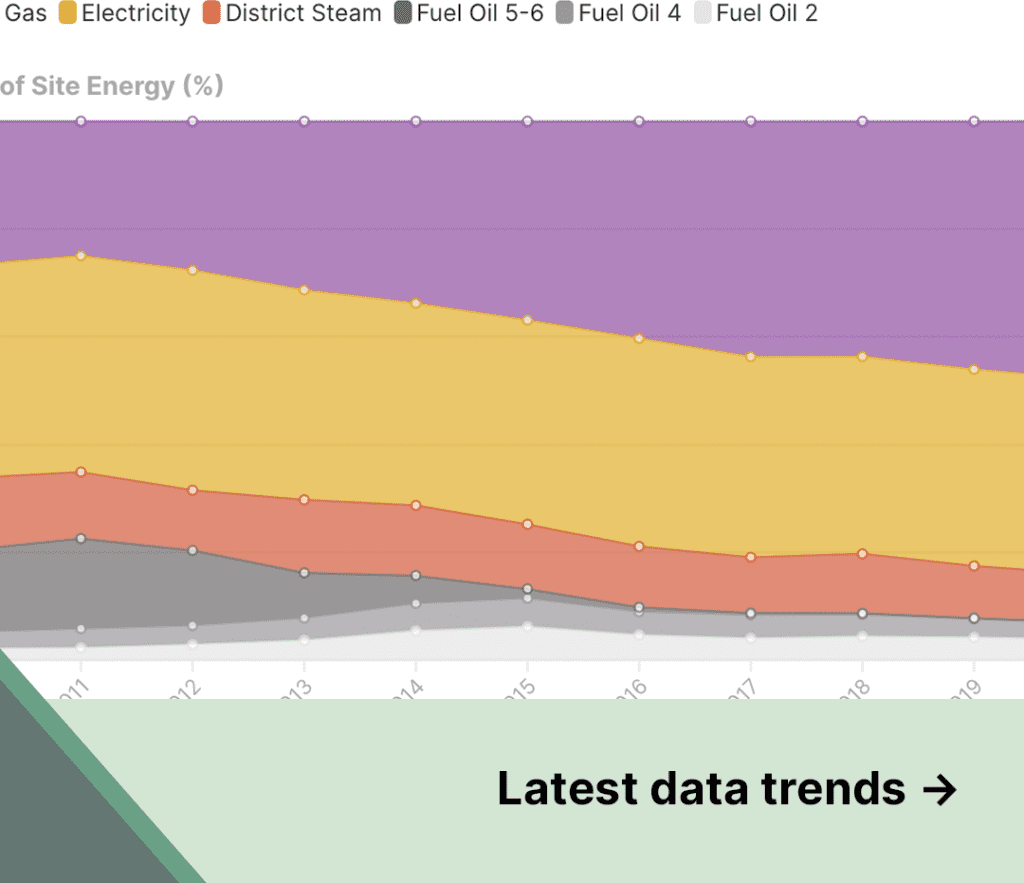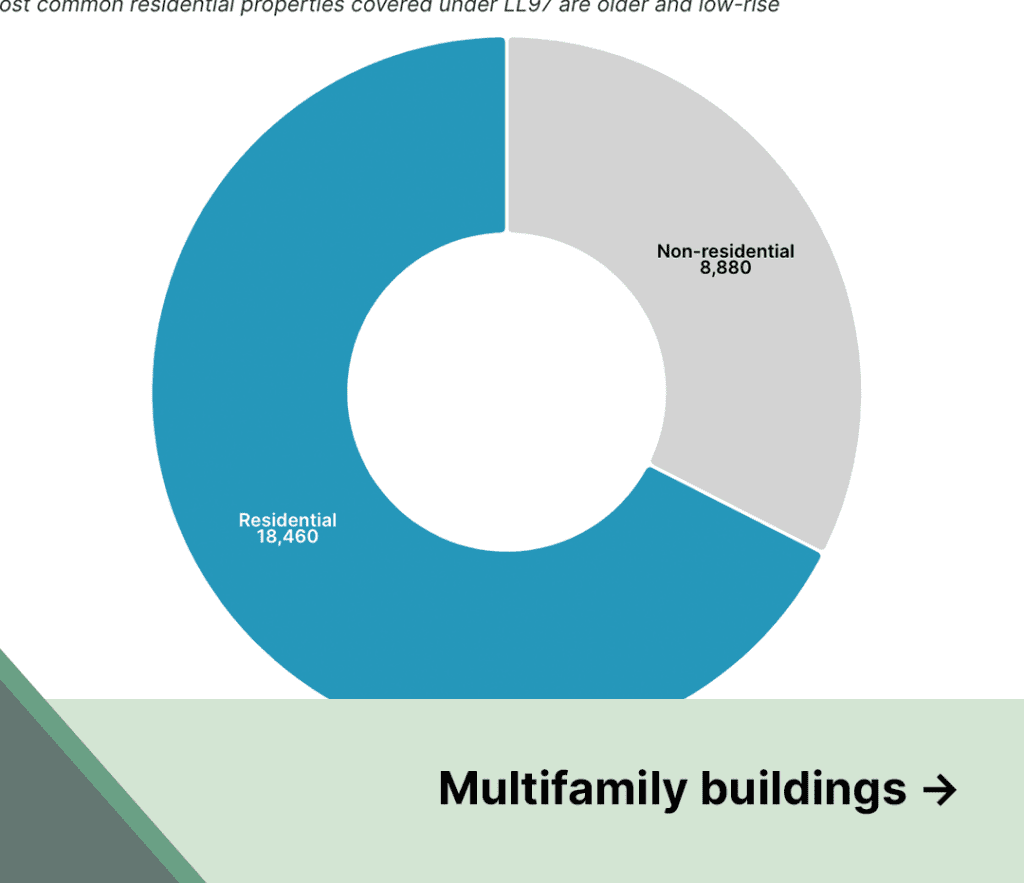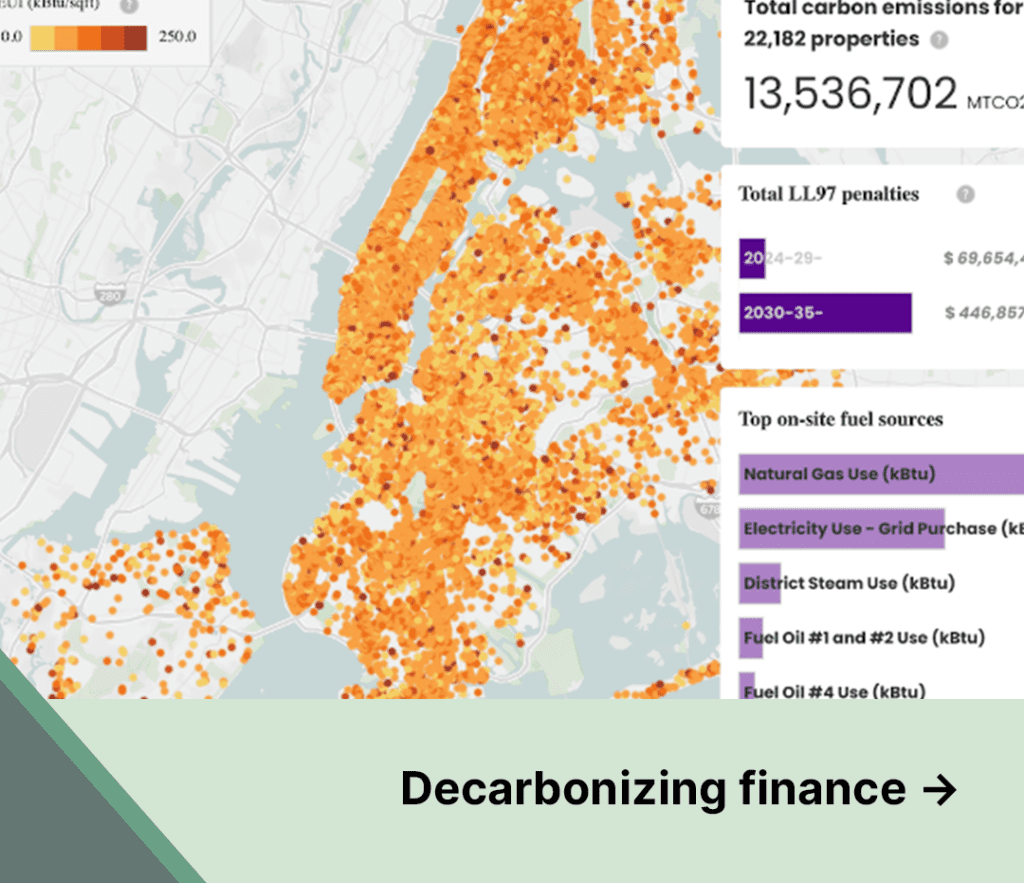How will increased power demand from building electrification impact the grid in NYC’s Environmental Justice Areas?
Highlights
- Many dense residential neighborhoods outside of Manhattan are classified as Environmental Justice Areas by NYC.
- Dense residential neighborhoods have unique opportunities for early electrification but are also vulnerable to grid constraints.
- Policy and grid planning is needed to ensure support reaches vulnerable communities.
Over time, switching the sizable heating and hot water loads of residential buildings to clean, electric systems will add substantial demand to the local electric grid infrastructure in EJ Areas. Currently, these loads are served primarily by gas infrastructure, so these areas tend to have lower power capacities compared to Manhattan neighborhoods where the grid has been built out to meet the electricity demand of large commercial buildings.
Our Grid Ready electrification modeling found that dense residential neighborhoods outside of Manhattan like – Flatbush in Brooklyn and Fordham in the Bronx – could see an outsized share of early building electrification1 and will likely be the first to see winter electricity demand exceed summer.2
That’s the tipping point where heat pumps could drive the need for significant grid infrastructure upgrades, since the grid must be built out to meet the increasing peak power demand.
To explore the equity implications of this dynamic, we turned to New York City’s ongoing comprehensive study of environmental justice under legislation passed in 2017. As part of that effort, the City recently published an online map identifying Environmental Justice Areas across New York City that meet the legal criteria for low-income or minority communities.3
We compared these two maps and the results are striking: very high overlap between Environmental Justice Areas and neighborhoods that could be the first to encounter electrification constraints because winter power demand exceeds current grid capacities.
Rapid building electrification is vital for climate progress and the health of New York City residents. Heat pumps are being installed in the city’s buildings every day, and this momentum will only accelerate as costs come down and new policies take effect. Governments, utilities and advocates are supporting this transition through financial incentives, long-term planning, outreach, education and more—with significant focus on ensuring that support reaches vulnerable communities.
Explore the graphic below to learn more about electrification, efficiency and advocacy efforts across New York:
This interactive data hub is made possible with generous support from Carrier



